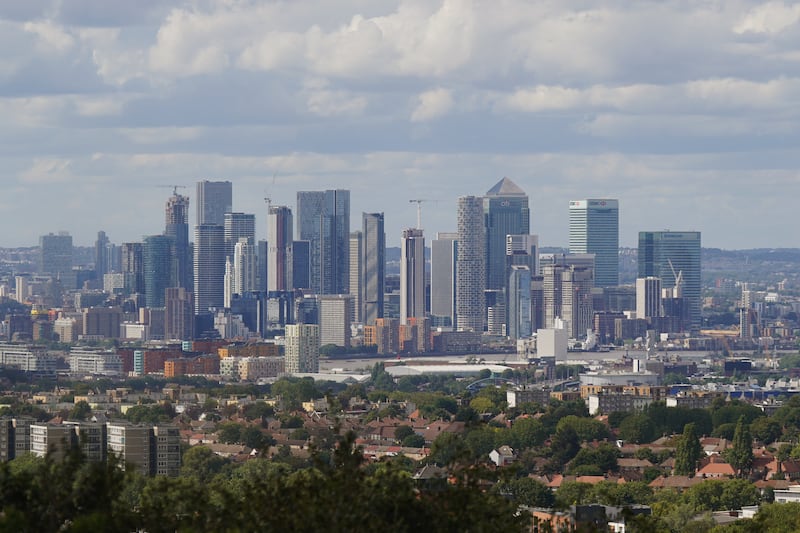Climate Change Fuels Wildfires, Threatening UK's Endangered Species

Table of Contents
The Intensifying Threat of Wildfires in the UK
The increased frequency and severity of wildfires in the UK are directly linked to the effects of climate change. This escalating threat demands urgent attention and proactive measures to protect both our environment and the vulnerable species that inhabit it.
Rising Temperatures and Drought Conditions
Higher temperatures and prolonged periods of drought create the perfect conditions for wildfires to ignite and spread rapidly. The UK has witnessed a significant increase in average temperatures over the past few decades, with more frequent and intense heatwaves, particularly in southern England. Simultaneously, rainfall patterns are shifting, leading to longer and more severe droughts in various regions.
- Increased frequency of heatwaves in southern England.
- Prolonged dry periods in the Scottish Highlands and moorlands.
- Reduced soil moisture levels across the country, creating flammable conditions.
- Data from the Met Office shows a clear upward trend in summer temperatures and a decrease in overall rainfall.
Increased Ignition Sources
While climate change creates ideal conditions, the ignition of wildfires often stems from both human activities and natural causes. Careless actions often exacerbate the problem.
- Discarded cigarettes and carelessly managed barbecues are common causes of wildfires, especially during dry periods.
- Lightning strikes, while a natural phenomenon, become a greater risk during periods of intense thunderstorm activity.
- Poor forest management practices, such as inadequate fuel reduction and the accumulation of dry undergrowth, significantly increase wildfire risk.
- Increased recreational activities in dry, vulnerable areas contribute to the likelihood of accidental ignition.
Impact on UK's Endangered Species
Wildfires inflict significant damage on the UK's delicate ecosystems and the endangered species that call them home. The consequences are far-reaching and devastating.
Habitat Loss and Fragmentation
Wildfires indiscriminately destroy habitats vital for the survival of numerous endangered species. This habitat loss leads to population decline and fragmentation, isolating populations and making them more vulnerable.
- Loss of peat bogs impacting the bog orchid ( Hammarbya paludosa).
- Destruction of woodland habitats affecting red squirrels (Sciurus vulgaris).
- Degradation of heathland impacting the Dartford warbler (Sylvia undata).
- Loss of coastal grasslands affecting the small blue butterfly (Cupido minimus).
Direct Mortality and Injury
Beyond habitat destruction, wildfires directly cause mortality and injury among wildlife. The immediate impact can be catastrophic.
- High mortality rates among ground-nesting birds due to nest destruction and direct exposure to flames.
- Burns and injuries to slow-moving reptiles and amphibians unable to escape the fire's path.
- Smoke inhalation leading to respiratory problems and death in various species.
- Loss of food sources due to the destruction of vegetation, further impacting survival rates.
Disruption of Ecological Processes
The consequences of wildfires extend far beyond the immediate impact on individual species. Wildfires disrupt complex ecological processes, affecting food chains and species interactions for years to come.
- Loss of keystone species, such as specific insects or predators, disrupting the entire food web.
- Changes in plant communities impacting pollinator populations and subsequent plant reproduction.
- Increased soil erosion and nutrient loss, hindering the long-term recovery of affected ecosystems.
- Alteration of water cycles and hydrology, with long-term consequences for water availability.
Mitigation and Conservation Strategies
Combating the escalating threat of climate change-fueled wildfires requires a multi-pronged approach encompassing improved fire management, climate change mitigation, and targeted conservation strategies.
Improved Fire Management and Prevention
Proactive forest management is crucial in reducing wildfire risk. This includes various strategies designed to prevent and control the spread of wildfires.
- Creating firebreaks to control wildfire spread.
- Implementing early warning systems for wildfire detection.
- Conducting controlled burns to reduce fuel loads in a controlled manner.
- Public awareness campaigns educating the public about wildfire prevention.
Climate Change Mitigation
Addressing climate change is paramount to reducing the frequency and intensity of wildfires. Significant reductions in greenhouse gas emissions are essential.
- Transitioning to renewable energy sources.
- Implementing policies to reduce carbon emissions from transportation and industry.
- Investing in carbon capture and storage technologies.
- Promoting sustainable land management practices.
Habitat Restoration and Species Protection
Following a wildfire, habitat restoration is crucial for the recovery of endangered species. Active conservation efforts are needed to help species recover.
- Creating protected areas for vulnerable species.
- Implementing habitat restoration projects to recreate lost habitats.
- Captive breeding programs for critically endangered species.
- Reintroduction efforts to bolster declining populations.
Conclusion: Climate Change and Wildfires Threaten UK’s Biodiversity
The evidence is clear: climate change is intensifying the threat of wildfires in the UK, placing numerous endangered species at risk. The combined effects of habitat loss, direct mortality, and disrupted ecological processes necessitate immediate and coordinated action. By understanding the interconnectedness of climate change, wildfires, and the fate of our endangered species, we can all contribute to mitigating the risks and protecting the UK’s unique biodiversity. Learn more about how you can support conservation organizations, advocate for climate action, and help combat climate change and protect endangered species today.

Featured Posts
-
 Gop Budget Bill Renewed Focus On Drug Middleman Reform
May 13, 2025
Gop Budget Bill Renewed Focus On Drug Middleman Reform
May 13, 2025 -
 894 Goals Ovechkin Matches Gretzkys Nhl Scoring Record
May 13, 2025
894 Goals Ovechkin Matches Gretzkys Nhl Scoring Record
May 13, 2025 -
 Metas Acquisitions Under Scrutiny The Ftcs Antitrust Case For Whats App And Instagram
May 13, 2025
Metas Acquisitions Under Scrutiny The Ftcs Antitrust Case For Whats App And Instagram
May 13, 2025 -
 Dzherard Batler Luchshie Roli I Filmy Po Mneniyu Zriteley
May 13, 2025
Dzherard Batler Luchshie Roli I Filmy Po Mneniyu Zriteley
May 13, 2025 -
 A Marvel Es Scarlett Johansson Visszateres A Kult Filmek Vilagaba
May 13, 2025
A Marvel Es Scarlett Johansson Visszateres A Kult Filmek Vilagaba
May 13, 2025
